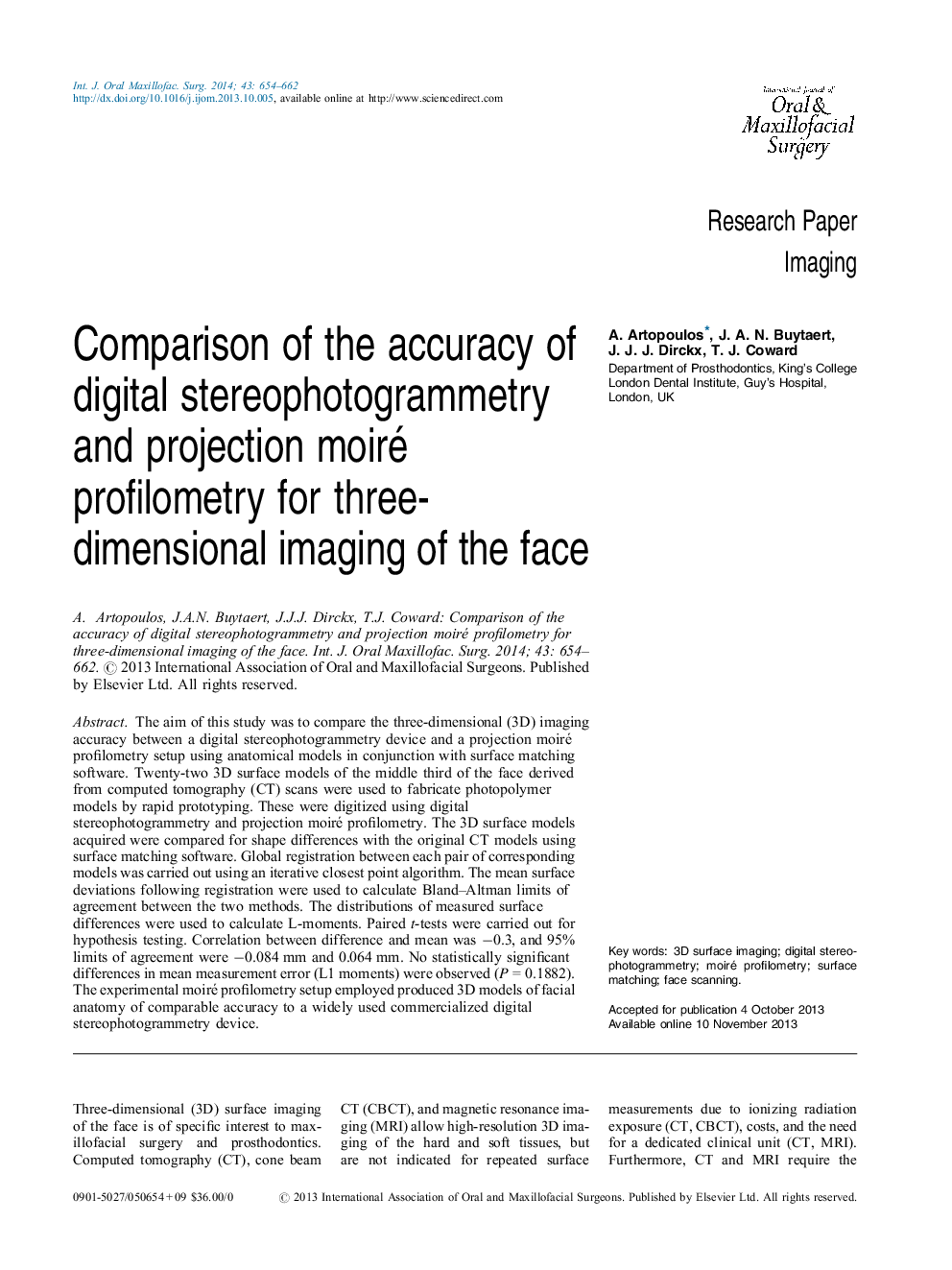| Article ID | Journal | Published Year | Pages | File Type |
|---|---|---|---|---|
| 3132303 | International Journal of Oral and Maxillofacial Surgery | 2014 | 9 Pages |
The aim of this study was to compare the three-dimensional (3D) imaging accuracy between a digital stereophotogrammetry device and a projection moiré profilometry setup using anatomical models in conjunction with surface matching software. Twenty-two 3D surface models of the middle third of the face derived from computed tomography (CT) scans were used to fabricate photopolymer models by rapid prototyping. These were digitized using digital stereophotogrammetry and projection moiré profilometry. The 3D surface models acquired were compared for shape differences with the original CT models using surface matching software. Global registration between each pair of corresponding models was carried out using an iterative closest point algorithm. The mean surface deviations following registration were used to calculate Bland–Altman limits of agreement between the two methods. The distributions of measured surface differences were used to calculate L-moments. Paired t-tests were carried out for hypothesis testing. Correlation between difference and mean was −0.3, and 95% limits of agreement were −0.084 mm and 0.064 mm. No statistically significant differences in mean measurement error (L1 moments) were observed (P = 0.1882). The experimental moiré profilometry setup employed produced 3D models of facial anatomy of comparable accuracy to a widely used commercialized digital stereophotogrammetry device.
